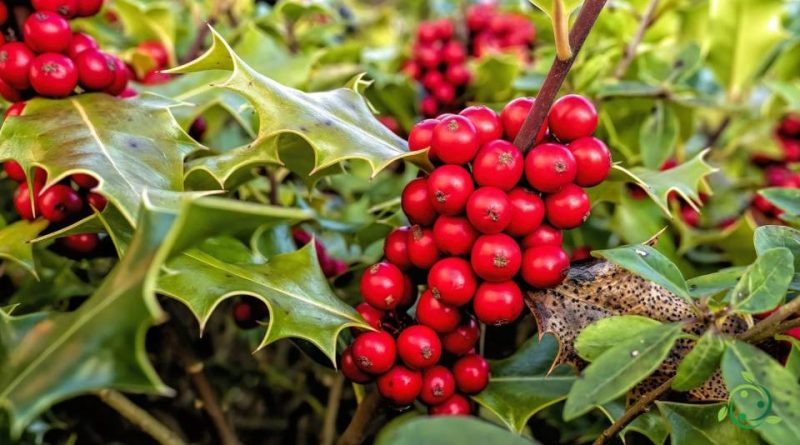Reproduction of the Holly
Reproduction of the Holly
The holly (Ilex aquifolium L.) is a plant of the Aquifoliaceae family, native to Atlantic Europe and the Mediterranean up to the Caucasus.
Suitable breeding habitat –
Ilex aquifolium is a plant that, at present, is found in western Asia and Europe in the undergrowth of oak and in particular beech woods, although it can sometimes form a dense thicket as a dominant species.
During the Cenozoic, the Mediterranean region, Europe and northwestern Africa had a more humid climate and were largely covered with forests of I. aquifolium which was a representative species typical of this biome, where many species were present current of the genus Ilex. With the drying out of the Mediterranean basin during the Pliocene, the forests of Ilex aquifolium gradually retreated, replaced by more drought-resistant sclerophyll plant communities.
Most of the last remaining laurel forests around the Mediterranean are believed to have died out around 10,000 years ago at the end of the Pleistocene.
Today this plant grows from sea level up to 1,400 meters in the Madonie. In Italy it is present in all regions.
Its optimal habitat is that of humid and shady environments, which are found within forests or in shady slopes, cliffs and mountain gorges.
Propagation –
Holly is a plant that grows in most soils, including peat, chalk, gravel, sand, and shale, as long as they are not waterlogged, although wild plants are occasionally found in winter standing water situations.
It tolerates a pH range of 3.5 to 7.2 and thrives in either full sun or fairly dense shade.
It also tolerates maritime exposure.
It is widely grown in parks and gardens of temperate regions. Hollies are often used for hedges; thorny leaves make them difficult to penetrate and are well suited for pruning and shaping.
Propagation occurs by seed; this should be sown as soon as it is ripe in autumn in an unheated seedbed. It can take up to 18 months to germinate. Stored seeds generally take two winters and a summer before they germinate and should be sown as soon as possible in unheated seedbeds.
Scarification, followed by warm stratification and then cold stratification, can speed up the germination time.
The young plants are rather slow growing and should be placed in single pots as soon as they are manageable.
Since they do not like transplanting, it is advisable to grow them in a substrate that allows the extraction of the seedling with the entire bread of earth before transplanting. The transplant must be done in the late spring period.
It is also useful to mulch the transplant area to protect the young seedlings.
It can also be propagated by cuttings of almost mature wood in the period of August in a shady and cool position. In this case it is advisable to let it root for 12 months before potting.
Ecology –
Holly is a hardy pioneer species that prefers relatively humid areas and tolerates frost and summer drought. The plant is common in the garrigue and in the Mediterranean scrub and is also found in broad-leaved woods and oaks.
Pure holly woods can turn into a vegetative labyrinth where thrushes and deer take refuge, while smaller birds are protected among their thorny leaves. After the first frosts of the season, the holly fruits become soft and fall to the ground serving as an important food for winter birds in a time of scarce resources.
The flowers are attractive and a source of nectar for insects such as bees, wasps, flies and small butterflies. The pale spots commonly found on leaves are due to the leaf mine insect Phytomyza ilicis.
The some areas of the world is an invasive species, such as on the west coast of Canada and the United States as well as in Hawaii.

